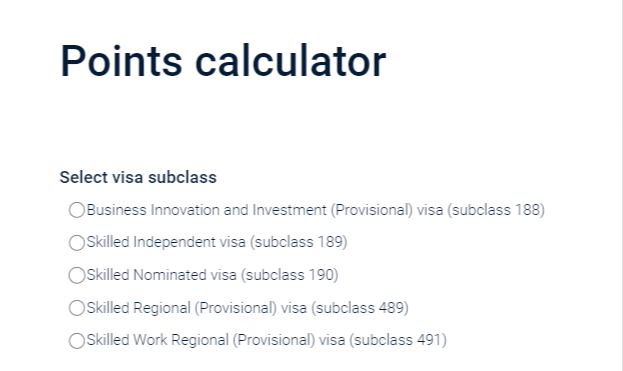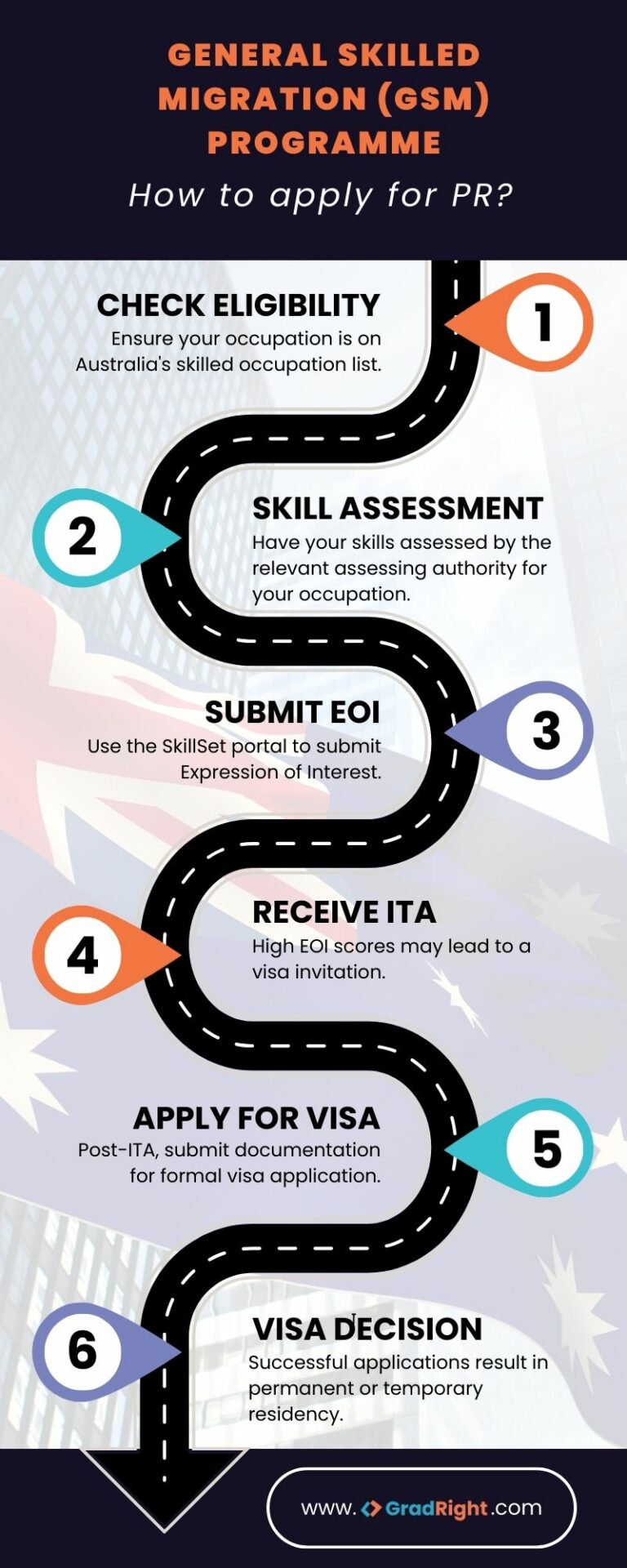Australia is a welcoming destination for students from all over the world. The graph below shows that Australia is home to the maximum percentage of students among the most popular international study destinations.

But for many, Australia is more than just a place to study. It’s a place to build a future.
This guide will explain the pathway from your higher education in Australia to Permanent Residency (PR). Many students wonder, “How can I get a PR in Australia after studying?” The right time to ponder the question isn’t during or after graduation or post graduation. It’s better to plan for PR in Australia even before you select your course or university. That’s because the Australian PR system can be complex, with many stages and visa subclasses.
This guide will help. In this guide, we will decode the PR process in Australia after studies.
By following this guide, you’ll understand how to get a PR in Australia after studying there.
What is PR?
Australian Permanent Residency (PR) is a visa status that grants non-citizens the right to live, work, and study in Australia indefinitely.
Unlike temporary visas, a PR visa has no set expiry date. This makes it a highly sought-after goal for many international students who envision a future in Australia.
If you are considering the “PR in Australia after study” path, you need to know its benefits, and the process to follow to get the PR.
Benefits of PR in Australia after studying there
Before we tell you how to get permanent residency in Australia after studies, let’s explain the benefits of the PR.
Here’s a look at some key benefits:
- Unlimited stay and work rights: As a PR holder, you can live and work in any part of Australia without restrictions. This opens up a wide range of career possibilities.
- Access to healthcare: PR holders are eligible for Medicare, Australia’s subsidized public healthcare system.
- Social security benefits: You may be entitled to various social support payments and benefits.
- Education opportunities: PR holders can access domestic student fees for further education, which can be significantly lower than international student fees.
- Sponsoring family members: You may be able to sponsor eligible family members to join you in Australia.
- Pathway to citizenship: After meeting specific residency requirements, PR holders can apply to become Australian citizens.
Obtaining a PR in Australia after studies is a gamechanger for an immigrant student. Now, let’s understand how to get a PR in Australia after studies.
How can I get a PR in Australia after studies?
Let’s break down the process into simple steps.
Step 1: Choose the right course and university
It’s crucial to know what to study in Australia for PR. So, first off, before heading to Australia, pick a course and university that align with Australia’s skills shortage areas.
Australia often gives preference to occupations that are in demand when granting PR. Fields like healthcare, engineering, and IT often find themselves on the skilled occupation lists. These are the ideal courses to study in Australia for permanent residency.
So, doing some research or consulting with an education counselor can help in making an informed decision.
Use the Skilled Occupations List page from the Home Affairs website of Australia, to identify the jobs that your course should target.

Of course, with so many options, finding the right program for PR in Australia is tough.
- There are many universities and courses to choose from.
- It’s hard to know which programs will boost your PR chances.
- Making the wrong choice can waste time and money.
Do what 60,000+ students did to find their best university and course. Use SelectRight.
How SelectRight helps:
- Matches you to your best options: Create your profile. You enter your goals and qualifications. SelectRight uses AI to match you with top Australian universities and programs that will help you get PR.
- Saves you time: No need to research everything yourself. SelectRight does the work for you.
- Lets you compare programs easily: Quickly see which programs are the right fit for you.
- Gives you expert advice: SelectRight advisors provide extra guidance to help you make the perfect decision.
Also read: MBA Jobs In Australia In 2024
Step 2: Obtain a Student Visa
Once you’ve got your admission sorted, the next step is to apply for an Australian student visa (Subclass 500). This visa allows you to live and study in Australia. It requires you to enroll in a course, have health insurance, and prove you have the funds to support yourself. It allows you to work a limited number of hours (up to 48 hours per fortnight).
Step 3: Study in Australia
During your time as a student, focus on excelling academically. Improve your English proficiency if necessary. Participate in internships and part-time work related to your field.
From this stage, the journey to PR in Australia after studies is best understood via your progress through different visa types. All these visas fall under the post-study visa category.
Step 4: Post-Study Work Visa (Subclass 485)
After completing your studies, you might be eligible for a Post-Study Work visa (Subclass 485).
This post-study visa offers two pathways:
Graduate Work Stream: For those with qualifications in specific in-demand occupations. It’s a stepping stone to launching your career in Australia.
Post-Study Work Stream: Designed for those with higher education degrees like master’s or doctorates. It allows you to stay longer (up to four years) for valuable work experience.
Step 5: Gain local work experience
Use the opportunity provided by the Subclass 485 visa to gain as much relevant work experience as possible.
What is the process of getting a PR?
At this stage, you have a Subclass 485 visa. Of course, we still have to find the answer to how to get permanent residency in Australia after studying there. For that, let’s understand the pathways from this stage ‘post-study’ to ‘PR’.
General Skilled Migration (GSM) programme
For many international students, the General Skilled Migration (GSM) programme is the primary pathway to PR in Australia after studies.
This points-based system evaluates applicants on factors such as age, qualifications, work experience, and English proficiency. To qualify, you’ll need to score well in these areas.
Note;=: Calculate your points at any time using the points calculator.

Key Components of the GSM Program
The GSM program consists of several visa subclasses. Each of these subclasses cater to students with different needs and circumstances.
The most common ones include:
- Skilled Independent Visa (Subclass 189): This visa is for skilled workers who do not have a sponsorship from an employer, a state or territory, or a family member. Applicants must submit an Expression of Interest (EOI) and be invited to apply. This visa allows you to live and work permanently anywhere in Australia.
- Skilled Nominated Visa (Subclass 190): For this visa, an Australian state or territory must nominate you. Like the Subclass 189, you must submit an EOI and be invited to apply. It also grants permanent residency but requires you to live and work in the state or territory that nominated you for a specified period.
- Skilled Work Regional (Provisional) Visa (Subclass 491): This is a provisional visa for skilled workers who are nominated by a state or territory government or sponsored by an eligible family member living in a designated regional area. It is valid for five years and provides a pathway to permanent residency through the Permanent Residence (Skilled Regional) Visa (Subclass 191), subject to meeting certain conditions.
How the GSM Program Works
Check your eligibility
First, ensure your occupation is on Australia’s skilled occupation list. You also need to meet other criteria, such as age, English language proficiency, education, and work experience.
Skill assessment
Before applying, you’ll need to have your skills assessed by the relevant assessing authority for your occupation. This assessment verifies that your skills and qualifications meet Australian standards.
Submit an Expression of Interest (EOI) via SkillSelect
SkillSelect is an online system that processes EOIs for skilled migration. Your EOI will include details about your skills, qualifications, and desired visa subclass. You do not need a job offer to submit an EOI.
Receive an Invitation to Apply (ITA)
If your EOI scores are high enough and you meet the eligibility requirements, you may receive an ITA for the visa. The points are awarded based on the points-based system. This system allocates points based on factors like age, English proficiency, skilled employment experience, and education.
Apply for the Visa
After receiving an ITA, you can formally apply for the visa. This step involves providing detailed documentation to support your EOI claims, including skills assessment, English language tests, and work experience.
Visa Decision
If your application is successful, you will be granted a visa to live and work in Australia permanently or temporarily, depending on the visa subclass.

Other pathways to permanent residency
To study in Australia and get permanent residency is one route. There are other routes to getting a PR in australia.
General Skilled Migration (GSM)
This program is for skilled workers who are not sponsored by an employer. You’ll need to submit an Expression of Interest (EOI) and be invited to apply for a visa. It includes visas like the Skilled Independent Visa (Subclass 189) and the Skilled Nominated Visa (Subclass 190).
Employer Nomination Scheme (ENS)
If an Australian employer is willing to sponsor you, this can be a direct path to PR. The Employer Nominated Scheme Visa (Subclass 186) is popular among those who find employment in their field of study in Australia.
Regional Sponsorship
The Regional Sponsored Migration Scheme (RSMS) allows you to live and work in regional or low-population growth areas of Australia. It’s an excellent option if you’re open to living outside major cities.
- Partner Visa
If you have an Australian partner, you might be eligible for a Partner Visa, leading to PR.
Answers to FAQs such as ‘how can I get PR in australia after study’ and more
To get PR in Australia after your studies, you need to transition from a student visa to a skilled migration visa, fulfilling specific criteria like work experience and skills assessment.
The time varies; however, completing a 2-year study program and gaining work experience through visas like the Subclass 485 can pave the way for PR.
The “easiest” pathway can differ based on your qualifications and work experience, but the General Skilled Migration program is a common route for students after studying.
Degrees in occupations listed on Australia’s Skilled Occupation List, such as engineering, IT, and healthcare, typically offer better pathways to PR.
Yes, work experience can significantly impact your points in the skilled migration process, making it a crucial step towards obtaining PR.
Directly after graduation, you may need to apply for a Post-Study Work visa first to gain work experience before applying for PR through skilled migration.
A positive skill assessment verifies that your qualifications and skills meet Australian standards, a necessary step for most skilled migration visas.
The points-system awards points for criteria like age, English proficiency, work experience, and Australian study, impacting your eligibility for skilled migration visas.
The Department of Home Affairs website: https://immi.homeaffairs.gov.au/ is the official source for visa and immigration information.





